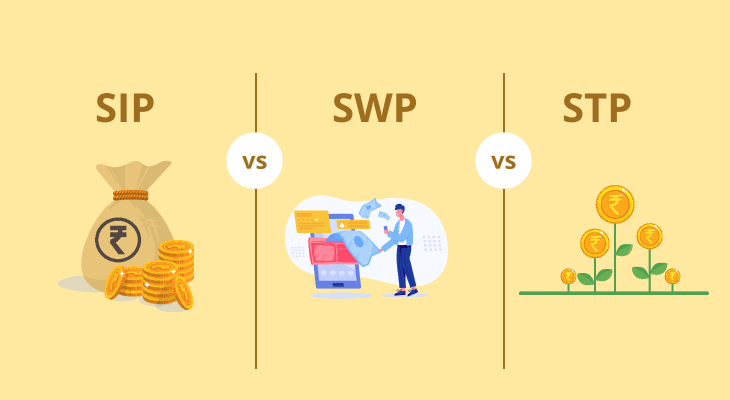
Blend Funds: Definition, Workings, Advantages
Investors are constantly on the look-out for investment avenues that can offer good returns while keeping the associated risks under check. Mutual funds, in particular, have become the investment tool of choice for a large number of people as they offer a wide variety of options that cater to investors with different risk profiles and financial objectives. One such type of mutual fund is – blend fund.
Blend funds have emerged as a popular investment option for investors seeking a balanced approach to wealth accumulation. These funds offer a unique blend of investment strategies by combining both growth and value-oriented stocks within a single portfolio. As an investor, understanding the workings and advantages of blend funds can help you make informed decisions in building a diversified investment portfolio.
What are Blended Funds?
As the name suggests, blend funds (or blended funds) combine two primary investment styles: growth-oriented and value-oriented. Growth stocks typically represent companies expected to experience above-average growth in earnings and revenue, while value stocks are perceived to be undervalued relative to their intrinsic worth. By incorporating both growth and value stocks, blend funds aim to achieve a balance between capital appreciation and stability. These funds invest across various market capitalisations, including large-cap, mid-cap, and sometimes even small-cap stocks, providing investors with exposure to a diverse range of companies and industries.
How Blend Funds Operate
Blend funds employ a bottom-up approach to stock selection, focusing on individual company fundamentals and valuation metrics. Fund managers analyse factors and key financial metrics such as earnings growth potential, price-to-earnings ratios, and dividend yields to identify attractive investment opportunities. Additionally, blend funds may utilise a top-down approach by considering macroeconomic trends and sector allocations to optimise portfolio positioning. By actively managing the portfolio and adjusting allocations based on market conditions, blend fund managers seek to capitalise on opportunities for capital appreciation while managing downside risk.
How Blend Funds Differ from Balanced Funds
Blend funds are often confused with balanced funds due to their similar objective of providing investors with a diversified investment solution. However, there are key differences between the two. While blend funds focus on blending growth and value stocks to achieve a balanced approach to investing in equities, balanced funds typically allocate their assets across a mix of equities and fixed-income securities, such as bonds. Balanced funds aim to provide investors with both growth potential and income generation through a combination of asset classes, whereas blend funds focus solely on equities with a blend of growth and value characteristics.
Here’s a table that outlines the key differences between Blend Funds and Balanced Funds across various aspects, including investment strategy, primary objective, risk profile, and asset allocation.
| Aspect | Blend Funds | Balanced Funds |
|---|---|---|
| Investment Strategy | Blend of growth and value stocks | Combination of equities and fixed-income securities |
| Primary Objective | Capital appreciation with reduced risk | Growth and income generation |
| Asset Allocation | Primarily invested in equities | Allocation across equities and bonds |
| Risk Profile | Moderate to high risk due to equity exposure | Moderate to low risk with diversified asset mix |
| Volatility | Can experience higher volatility than balanced funds | Typically lower volatility due to fixed-income component |
| Growth Potential | Offers growth potential with some income generation | Balanced growth and income potential |
| Investor Preference | Suited for investors seeking growth with reduced risk | Attractive for investors seeking both growth and income |
| Fund Composition | Flexibility in stock selection with blend approach | Allocation across asset classes with rebalancing |
Advantages of Investing in Blend Funds
Diversification
Blend funds offer investors exposure to a diversified portfolio of stocks across different market capitalizations and sectors, reducing the risk associated with investing in individual securities.
Potential For Growth
By combining growth and value stocks, blend funds seek to capitalise on opportunities for capital appreciation while mitigating downside risk, making them suitable for investors seeking long-term growth potential.
Flexibility
Blend funds provide fund managers with the flexibility to adjust allocations based on market conditions and investment opportunities, allowing for dynamic portfolio management.
Accessibility
Blend funds are easily accessible to investors through mutual fund platforms and brokerage accounts, making them suitable for both novice and experienced investors alike.
Drawbacks of Blend Funds
Market Volatility
Despite their diversified nature, blend funds are still susceptible to market volatility, and fluctuations in stock prices can impact fund performance.
Active Management Risks
Since blend funds are actively managed, there is a risk that fund managers may underperform their benchmarks or make suboptimal investment decisions, leading to potential losses for investors.
Expense Ratios
Blend funds may have higher expense ratios compared to passively managed index funds, which can erode overall returns over time, particularly in periods of underperformance.
Other Factors to Consider Before Investing in Blend Funds
Investment Objective
Evaluate your investment goals and risk tolerance to determine if blend funds align with your financial objectives. Blend funds aim for capital appreciation with reduced risk, making them suitable for investors seeking growth with moderate risk exposure. While blend funds offer a balanced approach to investing, they still carry inherent risks associated with equity exposure, so ensure the risk aligns with your risk tolerance.
Asset Allocation
Assess the asset allocation of the blend fund to ensure it aligns with your portfolio diversification strategy. Look for a balanced blend of growth and value stocks across different market capitalizations to achieve optimal diversification.
Historical Performance
Review the historical performance of the blend fund to assess its consistency and ability to generate returns over various market cycles. Consider factors such as trailing returns, risk-adjusted performance metrics, and benchmark comparisons to assess fund performance.
Fund Manager Expertise
Consider the track record and expertise of the fund manager managing the blend fund. A seasoned fund manager with a proven track record of navigating market cycles and implementing effective investment strategies can enhance the fund's performance.
Fund Size And Liquidity
Consider the size and liquidity of the blend fund, as larger funds tend to benefit from economies of scale and may offer better liquidity. High liquidity ensures you can easily buy and sell fund units without significantly impacting the fund's market price.
Portfolio Holdings And Sector Exposure
Review the portfolio holdings and sector exposure of the blend fund to understand its underlying investments and sector concentrations. Ensure the fund's holdings are diversified across different sectors and industries to mitigate concentration risk.
Conclusion
To conclude, blend funds offer a balanced approach to investing in equities by combining growth and value stocks within a single portfolio. These funds can provide diversification, growth potential, and flexibility, making them an attractive option for investors seeking exposure to the stock market. However, it's essential to carefully evaluate the risks and benefits of blended funds,and consider how they align with your investment objectives and risk tolerance before making investment decisions.
SIPs let you invest small amounts regularly, making it easier to stay consistent with your goals. With time, your money grows faster through compounding, helping you get the most out of your investments. Try our SIP Calculator to see how your money can grow and make smarter plans for your future.


